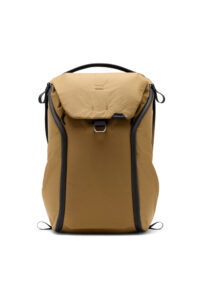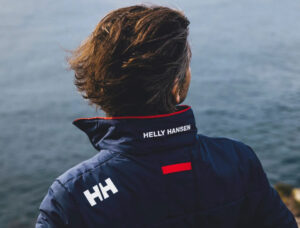In a fashion landscape increasingly saturated with spectacle and overstimulation, Japanese label A.PRESSE stands out precisely because it does less — and does it exceptionally well. Their latest release, a distilled tailoring capsule anchored by a minimalist gabardine suit, represents a masterclass in quiet precision. With its studied proportions, subtle detailing, and devotion to tactility, the offering is less of a seasonal drop and more of a meditative exercise in silhouette, fabric, and form.
Launching April 30th via A.PRESSE’s online store, this two-piece ensemble has already sent murmurs through the menswear underground, particularly among those who understand that the most radical garments are often the most restrained. Rooted in Japan’s storied relationship with tailoring — one built on reinterpretation rather than replication — the capsule doesn’t chase trends or play into Western pageantry. It does something rarer: it refines the familiar into the unforgettable.
The New Quiet Power Suit
At first glance, A.PRESSE’s gabardine suit may appear deceptively simple. But this is by design — and by discipline. The suit features wide-leg trousers with light front pleats, cut with an intentional volume that feels contemporary without veering into caricature. The jacket, meanwhile, offers a softened structure, with light padding, relaxed shoulders, and an elongated body that hints at heritage British tailoring without ever becoming nostalgic.
There’s no flash. No visible branding. No loud lining or hardware gimmicks. Instead, there’s harmony — a balance between fluidity and form, modesty and exactitude. The choice of gabardine as the primary material is key. A tightly woven fabric often reserved for outerwear, it brings weightless structure and refined drape, making the suit viable across climates. For summer, its breathable density is a gift: sturdy enough to hold a silhouette, light enough to allow movement and ventilation.
The Japanese Tailoring Ethos: Recalibration, Not Reinvention
To understand why this suit matters, one must understand the lineage it joins. Japanese tailoring, unlike its European counterpart, is less about preserving tradition and more about quietly subverting it. Labels like Auralee, Graphpaper, and COMOLI — and now A.PRESSE — are part of a generation of designers who treat Western menswear like raw material. Their method is closer to architecture than fashion: examine a structure, strip it of excess, reframe its proportions, soften its edges, and rebuild it with better bones.
A.PRESSE’s suit is a testament to this approach. There’s a monk-like reverence to its minimalism, but not one that feels austere. Instead, it feels alive — full of intention. It’s not minimalism for the sake of being quiet; it’s minimalism that reveals everything through what’s left unsaid.
The suit’s relaxed shoulders, generous leg lines, and unadorned front panels evoke classic postwar workwear as much as Savile Row. Yet, none of it feels retro. That’s the magic trick: A.PRESSE makes garments that seem timeless without falling into reproduction or pastiche. They are about presence — not provenance.
Material Intelligence
Gabardine’s inclusion cannot be overstated. Famously associated with trench coats, travel suiting, and utilitarian military wear, it is both historical and forward-thinking. A.PRESSE’s decision to use it not only grants the suit technical breathability for summer but also layers the garment with subtle cultural references. This is suiting as equipment — as something meant to be used, not admired behind glass.
The fabric’s tactile richness also aligns with Japan’s material-first approach to clothing. Much like how designers such as Issey Miyake or Yohji Yamamoto allowed fabric to dictate form, A.PRESSE lets gabardine speak. The result is a silhouette that doesn’t require embellishment — the drape, the weight, and the hand-feel do all the talking.
Details like tonal stitching, horn buttons, and a hand-pressed finish provide polish without ostentation. Even the suit’s muted tones — likely a shade of stone, khaki, or ink navy — reflect the brand’s preference for grounded, earthy palettes that age well, wear well, and speak softly.
The Capsule Approach: Less as Philosophy
What makes this release particularly compelling is its capsule format. In a fashion moment defined by excess, the capsule approach is a commitment to considered editing. A.PRESSE doesn’t overextend. It presents a singular offering — the suit — and lets it carry the weight of the statement.
There’s something almost literary about this move. Like a haiku, the capsule distills a complex system into a small, intentional form. There’s no need for excess SKUs, coordinating accessories, or influencer-laden campaigns. Just one piece. One message. Delivered with clarity.
For discerning consumers — the type who gravitate toward LOEWE’s stillness, Lemaire’s softness, or Jil Sander’s restraint — this approach resonates. It says: Here is one thing. We made it well. That is enough.
Summer Suiting, Rewritten
Suiting, especially in the warmer months, is often reduced to a compromise: wrinkled linens, under-structured cottons, or overly styled “casual tailoring” that feels unconvincing. A.PRESSE offers a different answer. Its gabardine suit neither mimics summer leisurewear nor apologizes for its formality. It simply exists in its own rhythm, designed to function and breathe without sacrificing presence.
Worn with a fine-knit tee and leather sandals, it becomes effortless. With a collarless shirt and loafers, it becomes ceremonial. Even with sneakers and a tank, it retains its spine. That’s the kind of adaptability that doesn’t rely on trend. It relies on architecture — on cut, cloth, and proportion.
The Understated Cult of A.PRESSE
Founded by industry veterans whose names remain secondary to the clothes, A.PRESSE has quietly ascended into the upper ranks of Japan’s design intelligentsia. Their pieces routinely sell out through a handful of select retailers — stores like Coverchord and United Arrows — without the need for advertising or celebrity placement.
This strategy of absence — of refusing to chase attention — makes their presence even more magnetic. It’s the anti-hype: garments that don’t scream, but speak fluently to those who know. The gabardine suit is not designed to be a viral object. It is designed to be lived in, reinterpreted, passed down.
And in an age when fast-fashion tailoring collapses after a few wears, that kind of durability — physical and aesthetic — feels almost revolutionary.
The Mission
There is something quietly radical about a suit that asks nothing more than to be worn well. In rejecting embellishment, in embracing function, in leaning into the humble richness of gabardine, A.PRESSE’s tailoring capsule reminds us that elegance is not about excess — it’s about attention.
Attention to how fabric moves. Attention to how the body breathes. Attention to what is essential and what is merely noise. This suit, released just ahead of summer, is not a call to buy more. It is an invitation to wear better.
In a time when fashion is increasingly fragmented, when garments are engineered for screens and feeds, A.PRESSE offers something rare: continuity. Their suit is not a drop. It is a document. A quiet letter from a designer to a wearer, saying: Here. This is what matters.
And for those listening — and looking — that is more than enough.
No comments yet.







